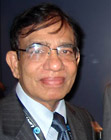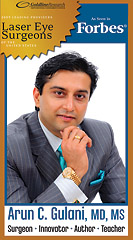
Are you taking your pills as prescribed? – Part IiI

Patients’ refusal to take medications as directed is a multifaceted challenge. Here are more situations that make patients vulnerable to the problem and strategies to overcome those barriers.
Fear of side effects: This is universal. A taxi driver will be reluctant to take water pills. So is a traveling salesperson. A young man may not take beta blockers that decrease his libido. I have difficulty to coax many patients to take statin drugs that reduce cholesterol: The common complaint being muscle pains. Many Indian patients have a built in notion that mainstream drugs can be too powerful and will reduce the dosage without doctor’s permission. The problem can be solved, though, with education and switching to other drugs they can tolerate. More importantly doctors must be aware of such patient proclivities.
Denial about the disease: This is particularly true if the condition being treated is chronic, such as hypertension or hypercholesterolemia. Also, if the symptoms disappear after the first few doses of the drugs some patients quit taking them. Recently I diagnosed diabetes in a late middle-age woman. She was quite upset and her immediate reaction was, “Come on, I don’t have any diabetes and I don’t want any medicines either.” To which I said, “There is nothing demeaning about having diabetes. But without treatment you are at risk for serious complications.” I had to explain in plain language the basis of my diagnosis. Finally she was convinced and agreed to take medicines.
Forgetfulness: Memory lapses are common especially in older patients. Those who are busy with their work often forget their midday dose of medicines. Automatic reminders, customized pill boxes that can pack a day’s or week’s worth of pills, long-acting version of the drugs, etc., can eliminate this problem. There are even alarm pill boxes with vibrating timer or beep that will act as medication reminders.
Too many drugs to take: Many are overwhelmed by the sheer number of medications they have to take daily. The elderly who suffer from a combination of diabetes, hypertension, high cholesterol and heart disease – a common combination – can wind up taking easily six to eight drugs. If they don’t have a relative or caretaker living with them, they can carefully take out all the drugs for the day and keep them in a pillbox first thing in the morning, making sure all are gone by the end of the day.
Don’t use abbreviations: Certain medical terminology for drug use such as “b.i.d.” for twice daily, is not acceptable when speaking to a patient. Many hospitals discourage even physicians writing this in the patients’ drug order sheets.
Fear of the doctor: The truth is that most of us do not particularly enjoy going to the doctor’s office. And many are uncomfortable to ask questions to their doctors or engage in a detailed discussion of their illnesses. And some physicians have a dismissive attitude towards patients as well. That culture needs to change, and patients should be encouraged to clear their doubts.
Everybody now realizes the problem's enormity and the battle must be fought by all health-care providers together. Because there are many causes of the problem, there is no universal formula that will resolve the issue. Any successful intervention must grab the attention of the patient and effectively engage them. Educating the patient about their diagnoses and proper management is of paramount importance. Often doctors are pressed for time and the job may fall on the nurse or other staff in the office who may also be overburdened with multiple responsibilities. Most elderly patients need a lot of supervision and handholding.
“Be compassionate,” says Dr. John Steiner, author and a researcher at Kaiser Permanente in Colorado. “Improving adherence is a team sport. Input from nurses, care managers, social workers and pharmacists is critical."
In the final analysis taking personal responsibility for one’s health is the choice one has to make every single day of one’s life.
This article concludes the series on drug compliance.
Dr. M.P. Ravindra Nathan is a cardiologist and Emeritus Editor of AAPI Journal. He is the author of the newly released book, "Stories from My Heart."(www.amazon.com or www.bn.com)
Eye Care
PROTECT YOUR VISION ON THE LINKS

Golf is a sport that is visually demanding besides being technique and technology dependent.
I like to classify vision demands used in golf into a couple of categories for ease of understanding and future surgical correction:
- Quantity of vision such as 20//40, 20/20, etc.
- Quality of vision such as:
*Contrast sensitivity to decipher different levels of visual inputs in different *lighting conditions;
*Depth perception to best apply learned techniques in three dimensions;
Spatial resolution to plan and direct putting and long drives effectively.
Finally, all of the vision inputs and resolutions along with eye-hand coordination lead to perfect execution for what the mind has planned in the mentally intuitive sport.
This is true for novice as well as professional golfers alike.
Vision Errors:
Golfers who wear contact lenses or glasses may have nearsightedness (Myopia), farsightedness (Hyperopia), or astigmatism (football-shaped cornea).
With current technology, we the minutest level of vision involvement can be measured and diagnosed, then corrected using computer drive, micron-precision lasers as in Lasik surgery. "No-blade" techniques allow for painless surgery with rapid healing and predictable outcomes
As golfers advance in age beyond 40 years, they need reading glasses because the natural lens inside the eye stops zooming (no more “Tele” and “Wide” zooming like a camera does). Then they need to keep their scorecards at further distance with their arms outstretched to read or record. That condition called Presbyopia can be treated with new- generation laser techniques.
With further aging (early 60s), the vision gets cloudy and dim because of cataracts, a cloudy transformation of our natural crystal clear lens. Such cataracts can be removed using modern laser techniques and be replaced by an artificial lens implant that can in most cases allow sight without glasses at distance and near. Such lens implants can be monofocal, multifocal like ReStor, Rezoom, Tecnis or accommodative like Crystalens.
Additionally, cataract surgery can now be planned as two stages. After cataract surgery, patients can undergo Lasik surgery to correct any residual astigmatism to completely fix the optics of the eyes for glasses-free vision.
Additionally, patients who have undergone previous cataract surgery and did not have a choice of these advanced, multifocal/progressive lens implants at that time can now undergo New Generation Lasik surgery to help them get rid of glasses altogether.
Golfer’s Eyes:
Another condition rampant among golfers is a Pterygium. A yellow-red lesion on the white of the eye can start as a cosmetic blemish and become an unsightly wedge-shaped growth. If left untreated it may eventually cover the cornea of the eye and harm vision. The condition is usually the result of exposure to sun, a professional hazard for golfers.
Many golfers have Pterygiums and our advice is to wear sunglasses with ultraviolet protection to prevent further damage. When they are advanced, though, they require surgery using “No-Stitch” surgical technique using Human placenta.
So before heading out to golf, as you apply your sunscreen, do remember to protect your eyes with sunglasses and a wide-brimmed hat if possible. It may ultimately contribute to a healthier “Fashion on the Fairway."